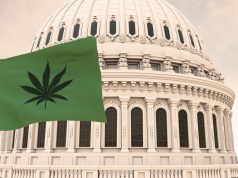
We are a nation in pain. The exact numbers are a matter of (contentious) debate, but somewhere between 11 and 30 percent of us are in chronic pain. Our backs hurt and our joints ache, we have irritable bowel syndrome and we get migraines on the regular.
From his Boulder office at Fully Alive Medical Center, Dr. Rav Ivker has watched more than 7,000 people come through his doors looking for a treatment to this pain or that. Most of them, he says, have previously been prescribed opioids to deal with their pain.
On the surface level, opioids appear to work, but really they are a physiological distraction from our pain. These drugs operate by binding to opioid receptors in the brain, spinal cord and across the body to reduce the pain messages delivered. But Dr. Rav warns they don’t reduce the pain itself, nor do they treat it. The efficacy of opioids relies on giving the patient what they want — a break from the pain. It may be illusory, but it’s a welcome reprieve.
Over time the drug becomes less effective, the side effects intensify and sometimes the user finds themselves in the grips of addiction. So they come to Dr. Rav for an alternative treatment — cannabis. But, as a holistically minded practitioner, he doesn’t merely switch them from one drug to another and call it a day. (To do so, he says, would be just as inane as prescribing opioids in the first place). No, he’s interested in cannabis as a part of a fundamentally different approach to pain management.
“Conventional medicine is great and wonderful for life-threatening and acute illnesses,” Dr. Rav says. “If I get into an accident, take me to the closest emergency room, that’s the best chance I’ve got at making it through. But for these chronic conditions, conventional medicine really fails miserably. It puts Band-Aids on symptoms and completely neglects the underlying causes. The opioid epidemic is exposing this crack in our medical framework and raising fundamental questions about how we diagnose and treat disease.”
In his new book, Cannabis for Chronic Pain, Dr. Rav explains the difference between conventional and holistic medicine in terms of the thinkers and philosophies credited with generating them. Conventional medicine stems from 17th-century theories of Descartes (“the father of modern medicine”) who understands the human being as a machine with two separate parts — body and mind — and from Newtonian physics that teaches that we live in a material universe.
Conversely, holistic medicine stems from Albert Einstein’s theory that we live in an energy universe and that that energy is the sole governing agency of the material world. Dr. Rav explains the efficacy of cannabis in its ability to work on both spectra, physical and energetic, saying:
“Cannabis works to provide the relief of pain, and it works on reducing seizure disorders and epilepsy and glaucoma. Which is to say there are myriad physical therapeutic benefits, but what most people are not aware of is the way in which it opens your mind and your heart. As a holistic practitioner, my practice is built on the belief that unconditional love is life’s most powerful healer and its corollary, the perceived loss of love, is our greatest health risk.”
Dr. Rav believes the conventional medical model is about to shift. The way he sees it, the energetic aspects of our lives can no longer be kept separate from our ideation of health and well-being — a change being forced upon us by the failure of opioids and the successes of marijuana.
Dr. Rav wrote his book to help establish the standard of care for integrating cannabis into a holistic medical program and offers 10 chapters with specific programs for treatment of our most common chronic conditions. But specifics aside, his book can be boiled down to three lessons we can learn from cannabis in transforming our approach to health and well-being.
First, Dr. Rav posits that just like health is not the absence of disease, eradication of pain is not the goal. “After all,” he says, “pain can be a blessing and a tool — it is a messenger that gets our attention like nothing else can.”
Secondly, Dr. Rav shifts the onus of medical treatment away from the doctor in her shiny white coat and puts it squarely in the hands of you, the patient. Dr. Rav says cannabis opens a window between you and your soul and that through it you can listen to your higher self, learn who you really are, why you are here and learn what your pain is all about.
Really though, it’s just two words that matter, Dr. Rav says with a chuckle, as if to say his book could have been a whole lot shorter: “Love heals.”














